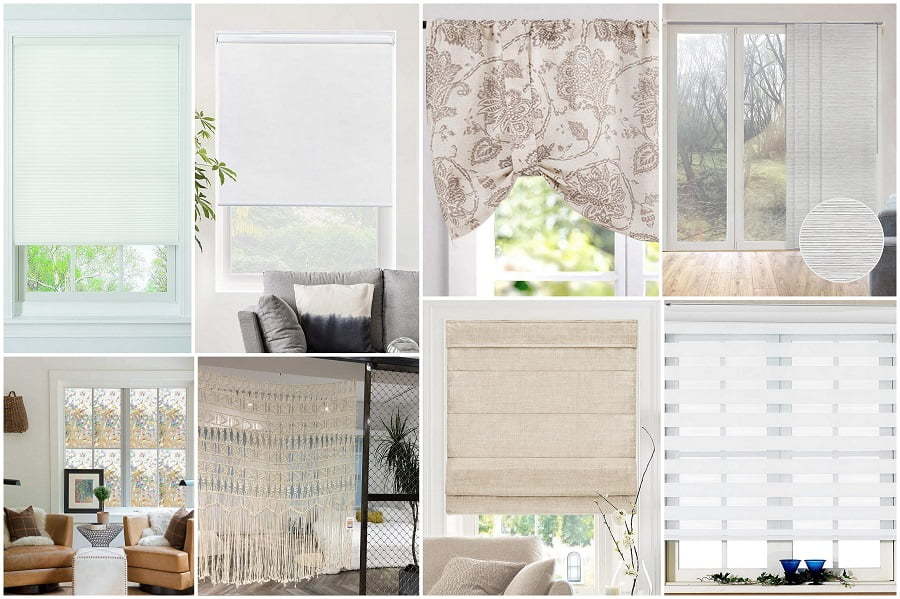Last updated on
Transform your outdoor space without breaking the bank with these alternative ideas to solar lights.
Outdoor lighting can make a huge difference in the ambiance and overall look of your home. And while solar lights are an eco-friendly option, they can be pricey and may not always provide enough light.
So, what are the alternatives? In this article, I’m excited to share with you 15 creative ideas for outdoor lighting that won’t break the bank.
From DIY projects to affordable store-bought options, we’ll explore each alternative’s advantages and disadvantages so you can make an informed decision on which option is best for your home.
So let’s dive in!
LED Lanterns
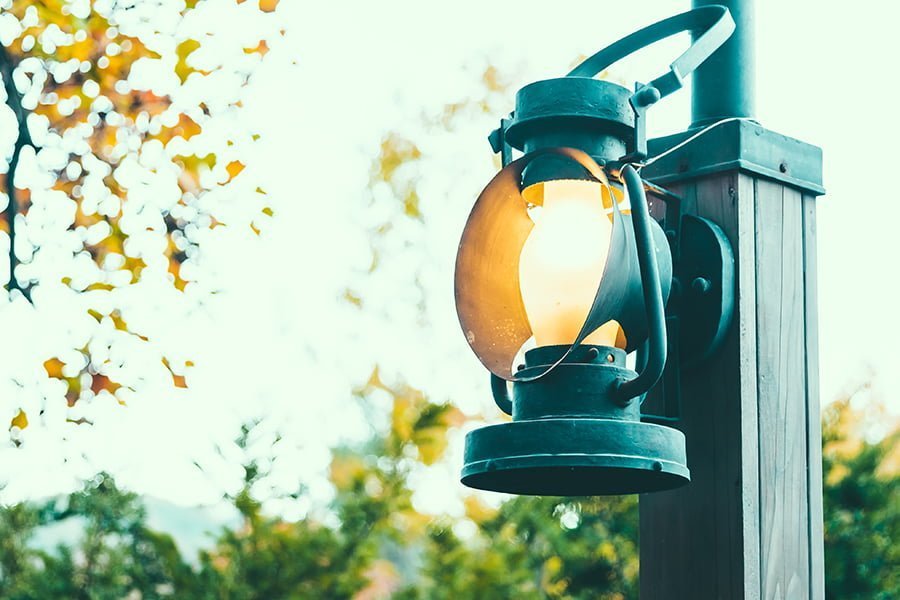
LED lanterns are a great alternative to outdoor solar lights. They come in various shapes and sizes, making them versatile for any outdoor space.
LED lanterns can be hung from trees or placed on tables to create a warm ambiance during evening gatherings. One of the advantages of using LED lanterns is that they do not require direct sunlight, so they can be used even in shaded areas.
Some models have rechargeable batteries that can last up to 12 hours on a single charge.
However, one disadvantage of using LED lanterns is that they may not provide as much light as traditional outdoor lighting options like floodlights or spotlights. Also, if you opt for battery-operated models instead of rechargeable ones, you will need to replace the batteries periodically which could add up over time.
Overall though if you’re looking for an affordable and easy-to-use option with minimal installation requirements then LED Lanterns are definitely worth considering!
Battery-powered Lights

Battery-powered lights are a great alternative to outdoor solar lights, especially if you live in an area with limited sunlight. These lights use batteries to power the LED bulbs and can be easily installed without any wiring or electrical work.
One of the advantages of battery-powered lights is that they can provide bright light for longer periods compared to solar-powered ones, as they do not rely on sunlight.
However, one disadvantage is that you will need to replace the batteries periodically which could add up over time. Some battery-operated models may not be as durable as their wired counterparts and may require more maintenance in terms of changing out dead batteries or replacing broken parts.
Overall though, battery-powered outdoor lighting options offer flexibility and convenience while still providing ample illumination for your home’s exterior spaces at night.
Motion Sensor Lights
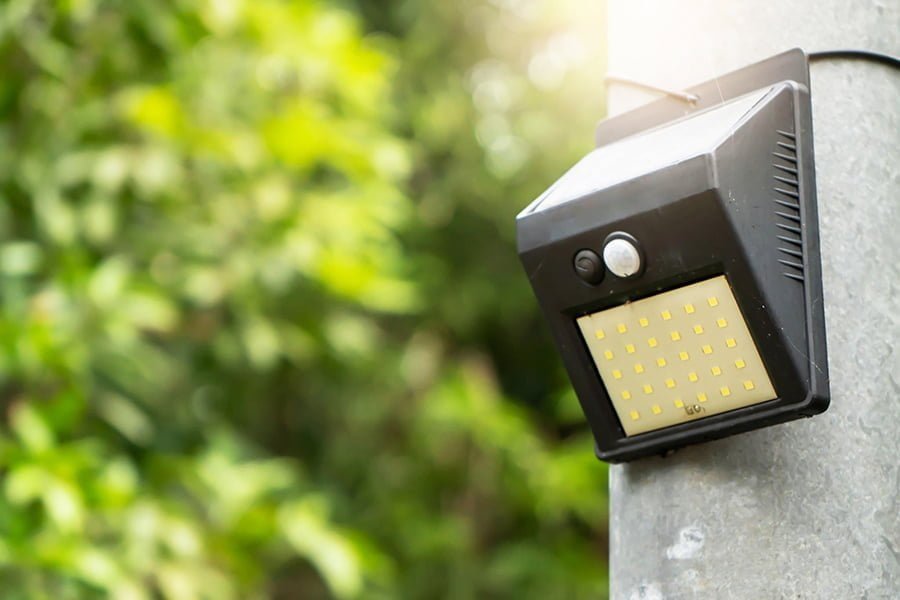
Motion sensor lights are a great alternative to outdoor solar lights as they only turn on when motion is detected, saving energy and extending the life of the bulb. They also provide added security by alerting homeowners of any movement outside their home.
However, one disadvantage is that they can be triggered by animals or passing cars which may cause unnecessary activation. Some motion sensor lights may not have adjustable sensitivity settings which could lead to false alarms or inadequate detection range.
If used correctly and strategically placed around your property, motion sensor lights can be an effective and budget-friendly option for outdoor lighting needs.
Electric String Lights
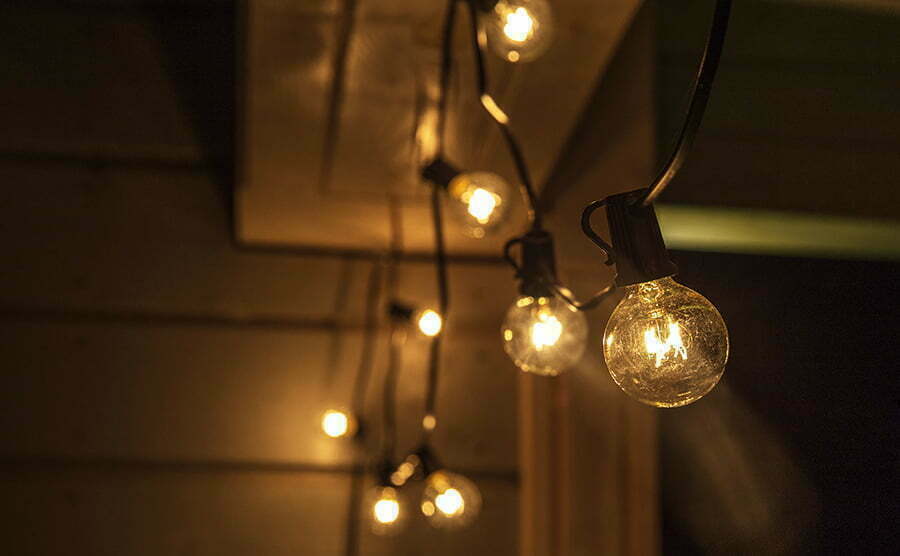
Electric string lights are a popular alternative to outdoor solar lights. They come in various lengths and colors, making them versatile for any occasion or style preference.
One advantage of electric string lights is that they provide consistent lighting throughout the night without relying on sunlight. They can be used year-round regardless of weather conditions.
However, one disadvantage is that they require an electrical outlet nearby or an extension cord to reach the desired location which may limit their placement options. Also, using electric string lights can increase your electricity bill if left on for extended periods.
Despite these drawbacks, electric string lights remain a great option for those who want reliable and customizable outdoor lighting solutions without breaking the bank.
Tiki Torches

Tiki torches are a popular alternative to outdoor solar lights, especially for those who want to create a tropical or beachy vibe in their backyard. These torches come in various sizes and designs, from traditional bamboo styles to modern metal ones.
Advantages of tiki torches include their affordability and ease of use. They can be purchased at most home improvement stores or online retailers for relatively low prices.
They provide ambient lighting that adds warmth and character to any outdoor space.
However, there are also some disadvantages associated with tiki torches. For one thing, they require fuel such as oil or propane which can be messy and potentially hazardous if not handled properly.
Also, the flames produced by tiki torches may attract insects like mosquitoes which could detract from your enjoyment of the outdoors.
Overall though, if you’re looking for an affordable way to add some ambiance and style to your backyard without breaking the bank on expensive solar lights then tiki torches might just be what you need!
Candlelit Luminaries
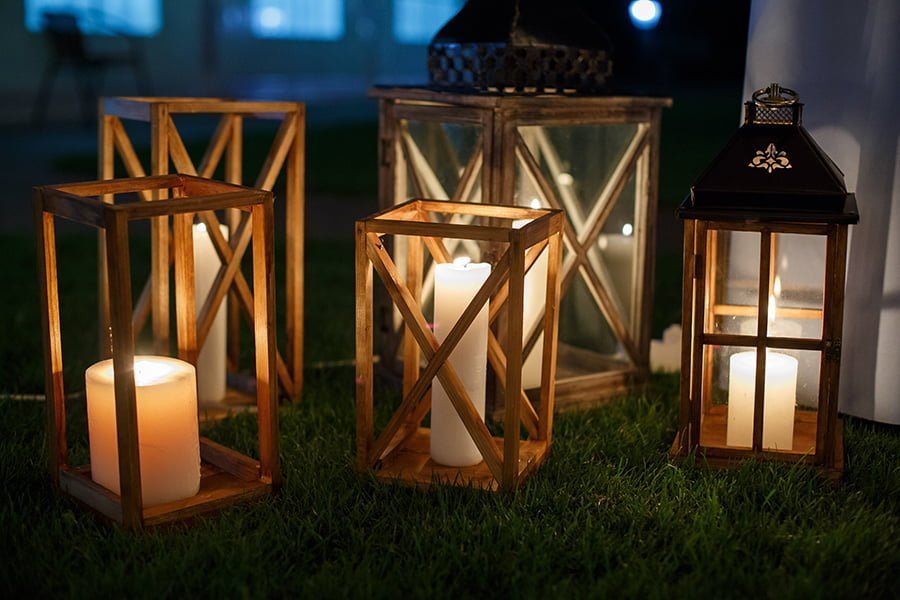
Candlelit luminaries are a classic and romantic alternative to outdoor solar lights. They create a warm and cozy atmosphere that is perfect for intimate gatherings or quiet evenings on the porch.
To make candlelit luminaries, you can use mason jars, glass vases, or any other transparent container of your choice. Simply fill them with sand or pebbles to stabilize the candles and prevent them from tipping over.
One advantage of using candlelit luminaries is their affordability – they are much cheaper than buying outdoor solar lights. They come in various sizes and shapes which allows you to customize your lighting according to your preference.
However, there are also some disadvantages associated with using candlelit luminaries as an alternative source of light outdoors. For instance, candles can be dangerous if left unattended especially during windy conditions where flames could easily spread out causing fire hazards around the house.
Overall though if used safely under supervision these beautiful alternatives will add charm & elegance while keeping costs low!
Glow-in-the-dark Paint
Glow-in-the-dark paint is a unique and creative way to add some ambiance to your outdoor space. This type of paint absorbs sunlight during the day and emits a soft glow at night, creating an ethereal atmosphere in your garden or patio.
One advantage of using glow-in-the-dark paint is that it doesn’t require any electricity or batteries, making it an eco-friendly option for lighting up your outdoor area. However, one disadvantage is that the intensity of the glow may not be as bright as other lighting options such as solar lights or string lights.
You will need to apply multiple coats of this type of paint for optimal results which can be time-consuming and costly if you have a large area to cover. Using glow-in-the-dark paint can be a fun DIY project with stunning results but may not provide enough light for practical purposes like navigating walkways at night.
Solar Light Tubes

Solar light tubes are an innovative way to bring natural sunlight into your home without the need for electricity. These tubes consist of a dome that is installed on the roof and a reflective tube that runs from the dome to the ceiling of your room.
The tube captures sunlight during daylight hours and reflects it down into your home, providing natural lighting.
One advantage of solar light tubes is their energy efficiency. They do not require any electricity or batteries, making them an eco-friendly option for homeowners who want to reduce their carbon footprint.
They can help lower energy bills by reducing reliance on artificial lighting during daytime hours.
However, one disadvantage of solar light tubes is that they may not be suitable for all homes or rooms. They work best in areas with direct access to sunlight such as roofs facing south or west and may not provide enough illumination in darker spaces like basements or windowless bathrooms.
If you have a space with ample access to direct sunlight and want an eco-friendly alternative to traditional electric lighting options then solar light tubes could be worth considering as part of your decor plan!
Low-voltage Landscape Lighting
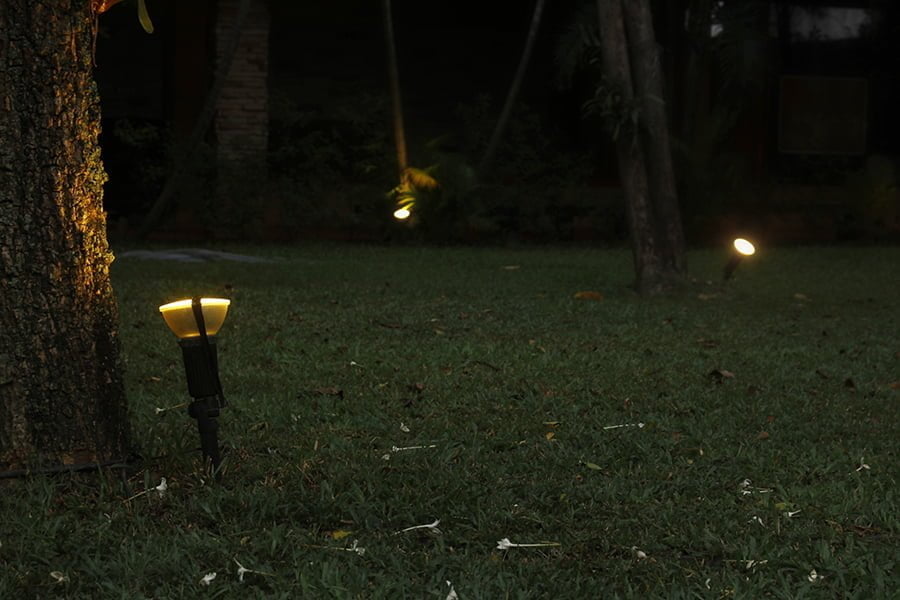
Low-voltage landscape lighting is a great alternative to outdoor solar lights. These types of lights are connected to a transformer that reduces the voltage from 120 volts to 12 volts, making them safer and more energy-efficient than traditional high-voltage lighting systems.
One advantage of low-voltage landscape lighting is its versatility in design options. You can choose from various styles, including path lights, spotlights, floodlights and deck or step lights.
Another advantage is that they provide brighter illumination compared to solar-powered alternatives which rely on sunlight for power.
However, one disadvantage of low-voltage landscape lighting is the initial cost as it requires installation by an electrician which may be expensive depending on your location and needs. These types of fixtures require regular maintenance such as bulb replacement or wire repair over time.
Overall though if you’re looking for reliable outdoor light sources with better brightness than solar-powered ones then Low-Voltage Landscape Lighting could be worth considering!
Propane or Gas Lamps
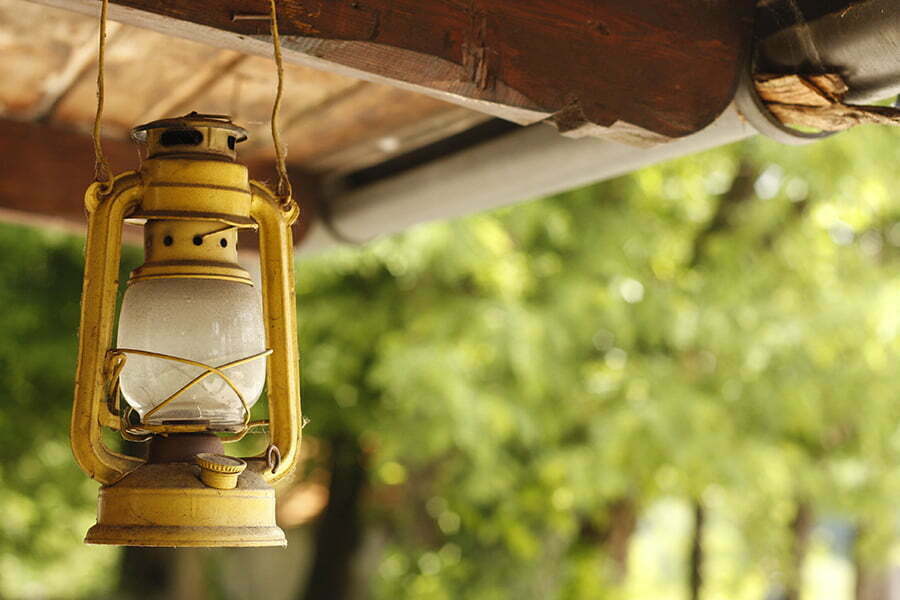
Propane or gas lamps are a great alternative to outdoor solar lights. They provide a warm and cozy ambiance that is perfect for outdoor gatherings, dinners, and parties.
Propane or gas lamps come in various styles such as tabletop, freestanding, wall-mounted or hanging models.
One of the advantages of propane or gas lamps is their reliability. Unlike solar lights that depend on sunlight to charge their batteries during the day before they can light up at nightfall; propane/gas lamps will work regardless of weather conditions.
Another advantage is that they produce brighter light than most solar-powered options which makes them ideal for illuminating larger areas like patios and decks.
However, one disadvantage of using propane/gas lamp lighting fixtures outdoors is safety concerns due to open flames. It’s important to keep them away from flammable materials such as curtains and foliage while also ensuring proper ventilation when used indoors.
There are ongoing costs associated with purchasing fuel tanks which need refilling periodically depending on usage frequency – this may not be cost-effective in the long run compared with other alternatives like LED bulbs powered by electricity from your home grid connection if available nearby without additional installation expenses involved upfront!
Wind-up Flashlights
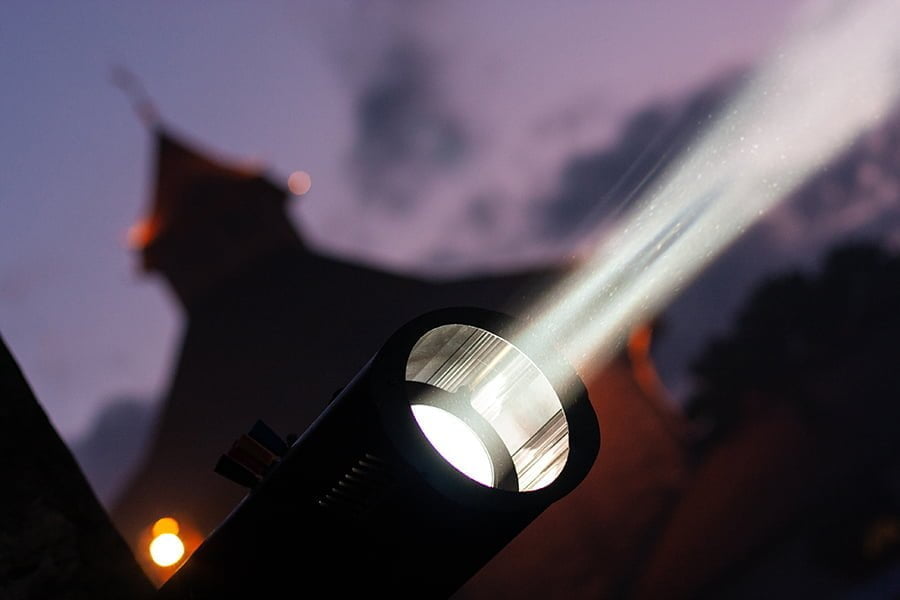
One alternative to outdoor solar lights that you may not have considered is wind-up flashlights. These handy devices are powered by a hand-crank mechanism, which means they don’t require any batteries or electricity to function.
One advantage of wind-up flashlights is their reliability in emergency situations. Since they don’t rely on external power sources, you can count on them to work even during power outages or other emergencies.
However, there are also some disadvantages to consider when using wind-up flashlights as outdoor lighting alternatives. For one thing, they typically provide less light than traditional electric lights or solar-powered options.
The need for manual cranking can be tiring and time-consuming if you need sustained illumination over an extended period.
Overall though, if you’re looking for a low-cost and reliable option for outdoor lighting that doesn’t require electricity or batteries – especially in emergency situations – then a wind-up flashlight could be just what you need!
Rechargeable Work Lights
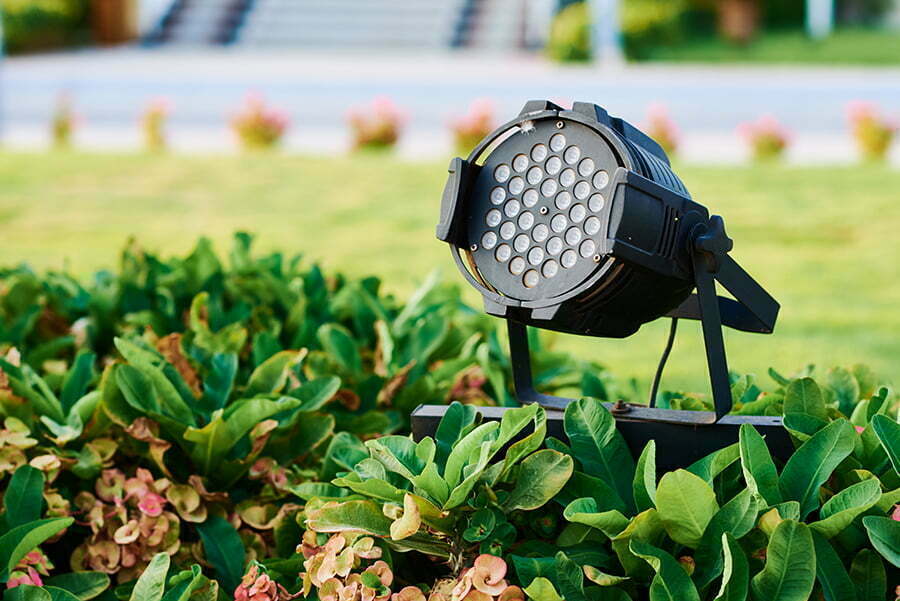
Rechargeable work lights are a great alternative to outdoor solar lights. These types of lights are designed for heavy-duty use and can withstand harsh weather conditions.
They come in different sizes, shapes, and brightness levels.
One advantage of rechargeable work lights is that they provide bright light for extended periods without the need for electricity or batteries. They have built-in rechargeable batteries that can be charged using a USB cable or an AC adapter.
Another advantage is their portability. Rechargeable work lights are lightweight and easy to carry around, making them ideal for camping trips or outdoor events where there may not be access to electricity.
However, one disadvantage of these types of lighting solutions is their cost compared to other alternatives like solar-powered options which require no additional costs after purchase as they rely on sunlight alone.
If you’re looking for a reliable source of bright light with long-lasting battery life and portability features then rechargeable worklights could be the perfect solution!
Fiber Optic Lighting
Fiber optic lighting is a unique and creative alternative to traditional outdoor solar lights. This type of lighting uses fiber optic cables to transmit light from a source, such as an LED bulb or natural sunlight, to the desired location.
One advantage of fiber optic lighting is that it can be used in areas where electricity cannot reach or where wiring would be difficult or expensive. Fiber optics are safe for use in wet environments and do not emit heat like traditional bulbs.
However, one disadvantage of using fiber optic lighting outdoors is that it may require more maintenance than other options due to exposure to weather conditions such as rain and wind. The initial cost may also be higher compared with other types of outdoor lights on the market.
Despite these drawbacks, if you’re looking for a unique way to add ambiance and interest into your outdoor space without relying on solar power alone then consider incorporating some form of Fiber Optic Lighting into your design scheme!
Solar-charged Indoor Lamps
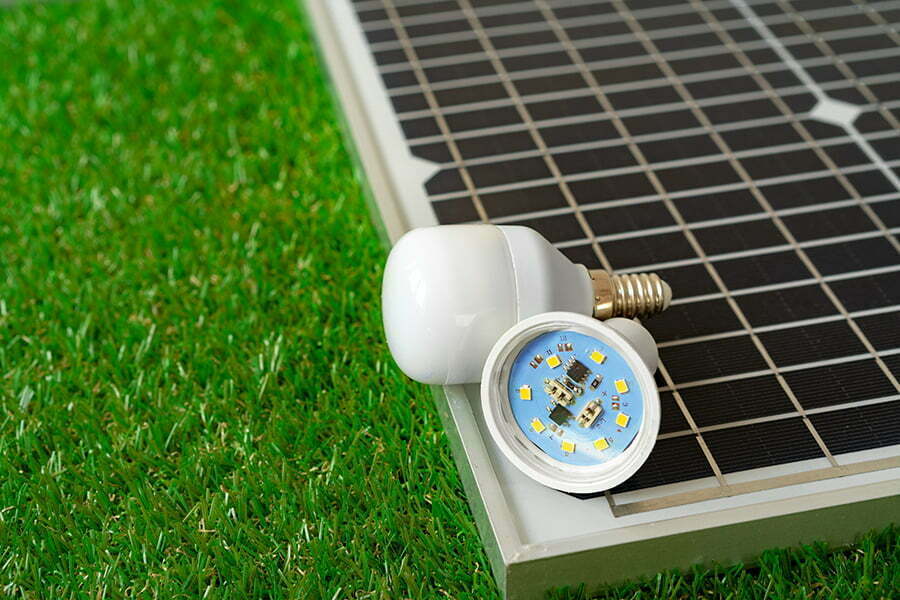
Solar-charged indoor lamps are a great alternative to traditional indoor lighting options. These lamps use solar panels to charge during the day and provide light at night, making them energy-efficient and cost-effective.
They come in various designs, from table lamps to floor lamps, so you can choose one that fits your decor style.
One advantage of solar-charged indoor lamps is that they don’t require any wiring or electricity connection. This makes them easy to install and move around as needed without worrying about cords or outlets.
Since they rely on sunlight for power, they won’t add anything extra onto your monthly utility bill.
However, one disadvantage of these types of lights is that their brightness may not be as strong as traditional electric-powered lights unless you invest in high-quality models with powerful LED bulbs. Also keep in mind that if you live in an area with limited sunlight exposure during certain times of the year (such as winter months), these lights may not be able to fully charge up for optimal use at night.
Overall though, if you’re looking for an eco-friendly way to light up your home while saving money on electricity bills over time – solar-charged indoor lamps could be a great option worth considering!
Biodegradable Glow Sticks

One alternative to outdoor solar lights that you may not have considered is biodegradable glow sticks. These eco-friendly options are perfect for adding a pop of color and light to your outdoor space without harming the environment.
Biodegradable glow sticks work by using non-toxic chemicals that react with each other when mixed, creating a bright and long-lasting glow. They come in various colors and sizes, making them versatile for any occasion or decor theme.
One advantage of biodegradable glow sticks is their affordability. They are relatively inexpensive compared to other lighting options, making them an excellent choice if you’re on a budget.
However, one disadvantage of these glowing beauties is their short lifespan. Biodegradable glow sticks typically last only 6-12 hours before losing their brightness completely. They cannot be recharged or reused like solar lights can be.
Overall though, if you’re looking for an affordable and environmentally friendly way to add some fun lighting accents outdoors temporarily (for example at parties), then biodegradable glowsticks could be just what you need!
Recap



